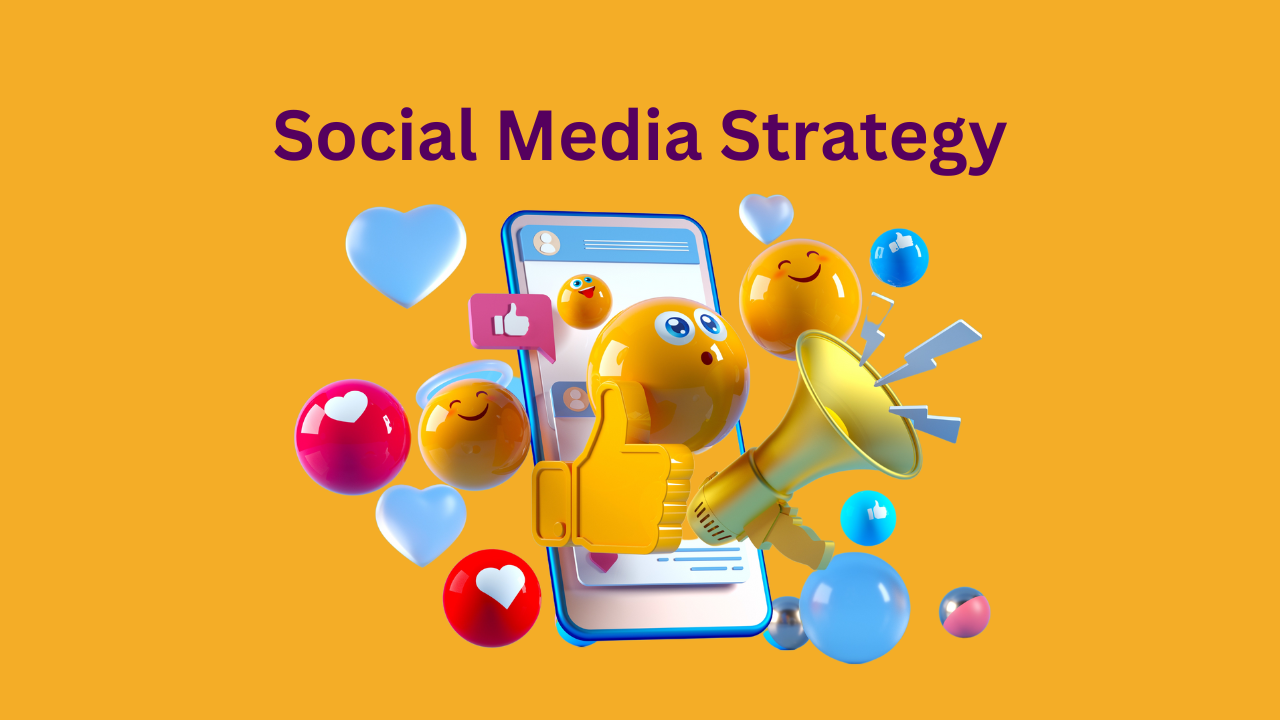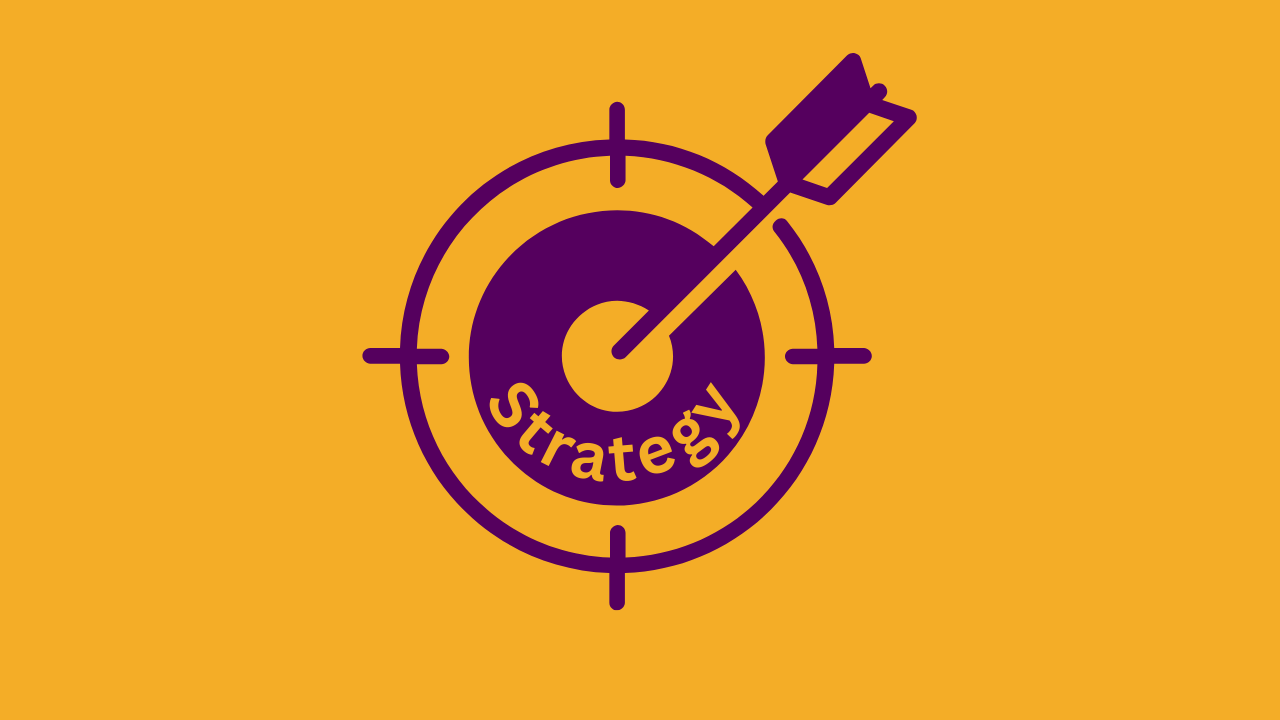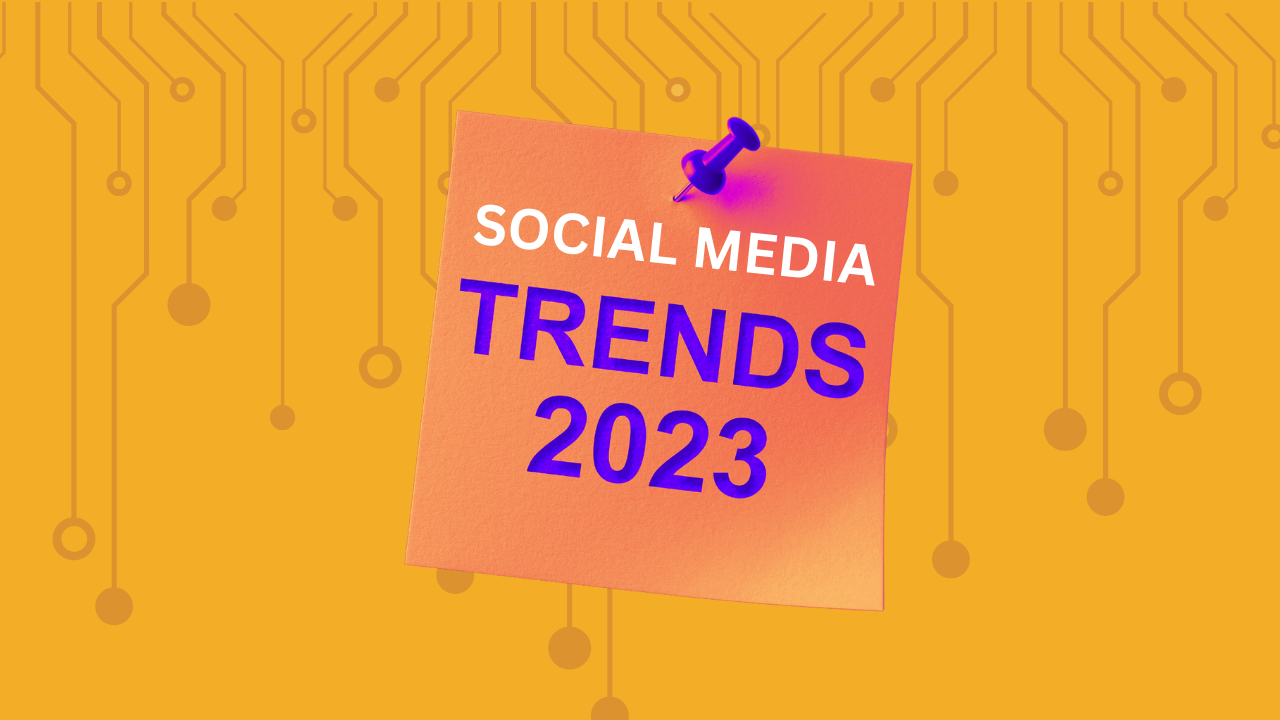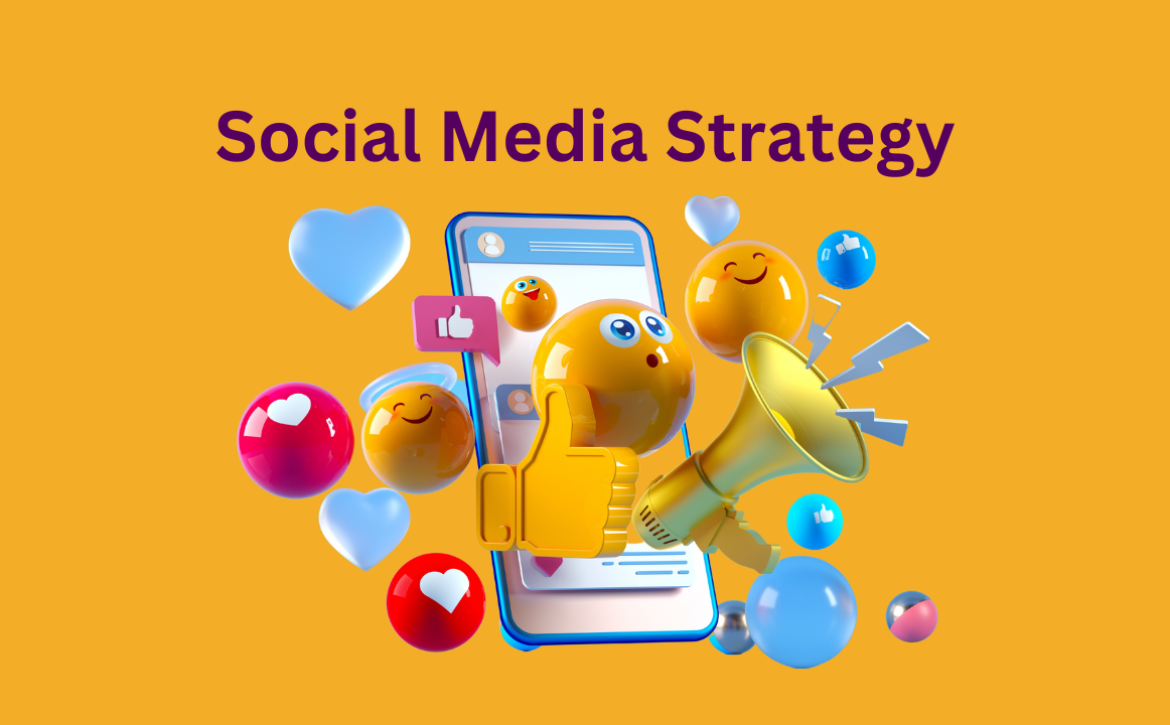How to create a social media strategy for your business.
 Social media has a landscape with more competition, content, and network now than ever. A clear social media strategy helps you to focus on efforts that serve your business goals.
Social media has a landscape with more competition, content, and network now than ever. A clear social media strategy helps you to focus on efforts that serve your business goals.
A social media strategy is not as simple as creating a profile and posting content once in a while. It requires a marketing strategy that will bring you success.
A lack of a social media strategy might not look like a big deal at first, but it can stop you from seeing any results in your social media marketing efforts.
In this article, we will look at social media strategies that can be suitable for your business. Whether you are new to the social media world or want to double-check your progress, we’ve got you covered. Let’s dive right in!

What is a social media strategy?
A social media strategy helps you plan what you want to achieve on your social media profiles. Setting up a well-thought-out strategy for your social media presence is highly beneficial. A more detailed and specific plan will better your social media performance.
A well-performing social media platform will;
- Increase your brand awareness
- Attract more customers.
- Make your social proof more visible.
- Gain more credibility.
This will strengthen your position in the market as a professional businessman.
Why would you want to invest in a social media strategy?
Nowadays, businesses don’t use social media just for fun anymore. It’s about brand awareness, making profits, or simply growing your business. Let’s look at the numbers and statistics about social media and its importance.
- Over 55% percent of people in the world use social media.
- Facebook is the most widely used social media platform, with 3 billion distinct users.
- People spend about 2hrs 30 mins on social media every day.
- Over 90% of internet users are on social media.
As you can see, social media platforms have a lot of potentials that you can invest in growing your business. Let us look at how to make your social media strategy for your business.
How to create your social media strategy.
Creating the perfect social media strategy is not easy, but once you learn how to create an effective one, you’ll be on the right path to achieving your business objectives. Some of the strategies include;
1. Set realistic goals for your business.
Ask yourself this question “what do you want from social media anyway?”. Your social media strategy should start with your goals. The most common goals for social media are;
- Increasing brand awareness.
- Increasing community engagement.
Do you want to have a larger following or a more active community? setting your goals first will help you reach them. Your goals will also make it easier to define social media marketing strategies. It will be easier to know how much time and resources you need to put into your campaigns.
Moreover, you need to set realistic goals. It’s better to tackle smaller goals that allow you to scale your efforts reasonably and affordably.
Goals that are suitable for all businesses of different shapes and sizes include;
- Generate leads and sales – Followers don’t make purchases by accident; whether online, in-store, or through your social media profiles.
- Boost community engagement – Most consumers think businesses or brands that engage them are the best. So, it would pay to develop new ways of engaging your current followers. Try to experiment with your content and messages. It could be as easy as asking a question. Your customers can be your biggest cheerleaders if you engage with them.
- Move traffic to your site – social media can drive traffic to your website. You can use promotional ads, and keep an eye on your conversions and URLs. This will help you determine your ROI from social media.
A combination of these goals can get you started and help you understand which networks you can use. It’s best to start small rather than having too many objectives that might confuse you. Pick one or two and rally your team to work with them.
2. Research your target audience.
Very few marketers use social media data to understand their audience. This can be a huge opportunity for you. What you need to know about your audience is already available. You just need to know where to look.
Different social media platforms attract different audience.
- Facebook and YouTube have a high-earning user base and can be prime places for ads.
- Instagram and YouTube are the top social networks among millennials and Gen Z. These social sites show the strength of eye-popping, bold content that oozes personality.
- Women visit Pinterest more than men; which boasts the highest average value order for shoppers.
- LinkedIn has a well-educated user base, making it a platform for in-depth, industry-specific content.
Don’t spread yourself too thin. Instead, focus more on platforms where your core audience is already active.
3. Identify your most important metrics and KPIs.
Your goals should always be data-driven, no matter your goals or the industry you are in. This means you should focus on social media metrics that matter to your business. Rather than focusing on vanity metrics, it would be best to dig more into data that aligns directly with your goals.
Some of the metrics you should focus on include;
- Reach – A post reach is the number of unique users who saw your post. How much of your content shows up on users’ feeds?
- Clicks – This is the number of clicks per content or your account. Tracking your clicks per campaign shows what drives your audience to your site and encourages them to buy.
- Engagement – Engagement is the total number of interactions divided by the number of impressions. This will show how well your audience perceives you and their willingness to interact with you.
- Hashtag performance – Which hashtags were more associated with your business? What were your most used hashtags? The answers to these questions can help you shape your content in the future.
- Organic and paid likes – Likes are attributed to paid or organic content. Organic content is hard to gain, so most businesses turn to paid ads. Knowing the difference can help you manage your ad budget by investing in different platforms suitable for your business.
- Sentiment – These measures how users react to your content, brand or hashtag. How did your customers find your recent post? Did they like it or did your content offend them? What type of sentiment does your audience associate with your content? It’s always better to dig deeper and find out what your customers think about your business.
An effective social media strategy will always root itself in numbers. With that said, you should always align your metrics with your original goals.
4. Create engaging social media content.
It’s no surprise that your social media strategy depends on your content. By now, you have a pretty good idea of your goals, audience, and brand strategy. What about your content strategy?
Some ideas and inspirations for your content strategy include;
Chances are you’ve come across a post from a particular brand that sounds more like them. Many brands rely on the same content formats and touches every time, from graphics to reels. These themes can help you become more consistent and focus on a content strategy that makes sense.
For example, you can use memes, product photos, etc., while using a defined color scheme.
- Use time-sensitive posts.
You can tap into your followers’ FOMO (Fear of Missing Out), which is interactive. Popping up first on users’ feeds can help your brand “skip the line” and keep your content fresh in audiences’ minds.
Most marketers say video content is the most valuable type for achieving social goals, and for a good reason. Social video is very popular now, especially with the rise of TikTok and Instagram reels. Short and long-form videos dominate social media due to their high engagement rate.
Plus, thanks to advancements in DIY (Do it Yourself) video production, you don’t need a massive production budget to make videos. You only need a laptop or a phone and learn a few editing tricks online.
- Show your human side with your posts.
Personal and personable content should be the cornerstone of your social media strategy. For example, during the pandemic, your post can touch on what people are going through and ease your customers. Don’t be afraid to remind your followers of the humanity behind your posts.
- See what your competitors are doing.
Before you start creating your content, you should know what your competitors’ content is like.
You can learn much from a simple view of your competitor’s social presence. The simplest way to find competitors is through a google search with your keywords, phrases, and industry terms and see who shows up.
You can see how their social channels compared to your social media strategy. The goal here is not to copy your competitors’ content. You can determine what works for them and what conclusions you can adopt to your social media strategy.
5. Make your social media presence timely.
Timeliness is one of the most important strategies for your social media. Regularly post fresh content and always be available for your customers. But you can’t always expect your customers to operate during your work hours.
Timeliness can be helpful when your resources are minimal, or you have a small social media team.
Some of the ideas that can help you maximize your time on social media include;
- Post when you can engage.
Ask yourself, when is your business available on social media to engage and interact with customers? Some people might recommend posting in the morning or evening. However, there is no point in posting at the “preferred time” if you can’t interact with your customers.
Always ensure that your social media managers are ready and available to answer any questions when you put your post up. You can take your time to review the best time to post on social media; however, it’s critical to engage after you post your content.
- Respond to your customers ASAP.
Most customers love speedy responses and believe that strong customer service defines a “best in class” brand on social media.
Being present and talking to your customers can gain respect for your business. Social customer care is very important for businesses that want to increase audience awareness, and word usually travels fast about great service.
Whether responding to a question or capitalizing on a compliment, you should not keep your customers hanging. Research shows that social media is the #1 preferred channel for feedback and reaching out with service issues or a question.
Additionally, most users believe businesses should respond to social media within 4 hours. That should give you extra legroom to respond on time.
6. Assess what’s working and what isn’t.
By now, you have a bigger understanding of your social media strategy. However, it’s essential to test your strategy throughout the year. There is no denying that many social media strategies are a matter of trial and error.
You are bound to make a few digital marketing mistakes along the way.
Monitor your metrics to help you make a few tweaks to your social media strategy. Do not shelve the whole thing, because that can be time-consuming to start all over again. You can proactively use the takeaways from your metrics to inform your next strategy overhaul.
Create your social media strategy for your business today.
This guide highlights plenty of strategies for your business’s modern-day social media presence. But putting it together doesn’t have to be hard. If you set your goals and address the steps above, you are already ahead in making the best social media strategy for your business.
If you need more actionable and inspirational ways to build your social media strategies, feel free to contact us, and we’ll be more than ready to help you. Best of luck!





 Social media has a landscape with more competition, content, and network now than ever. A clear social media strategy helps you to focus on efforts that serve your business goals.
Social media has a landscape with more competition, content, and network now than ever. A clear social media strategy helps you to focus on efforts that serve your business goals.